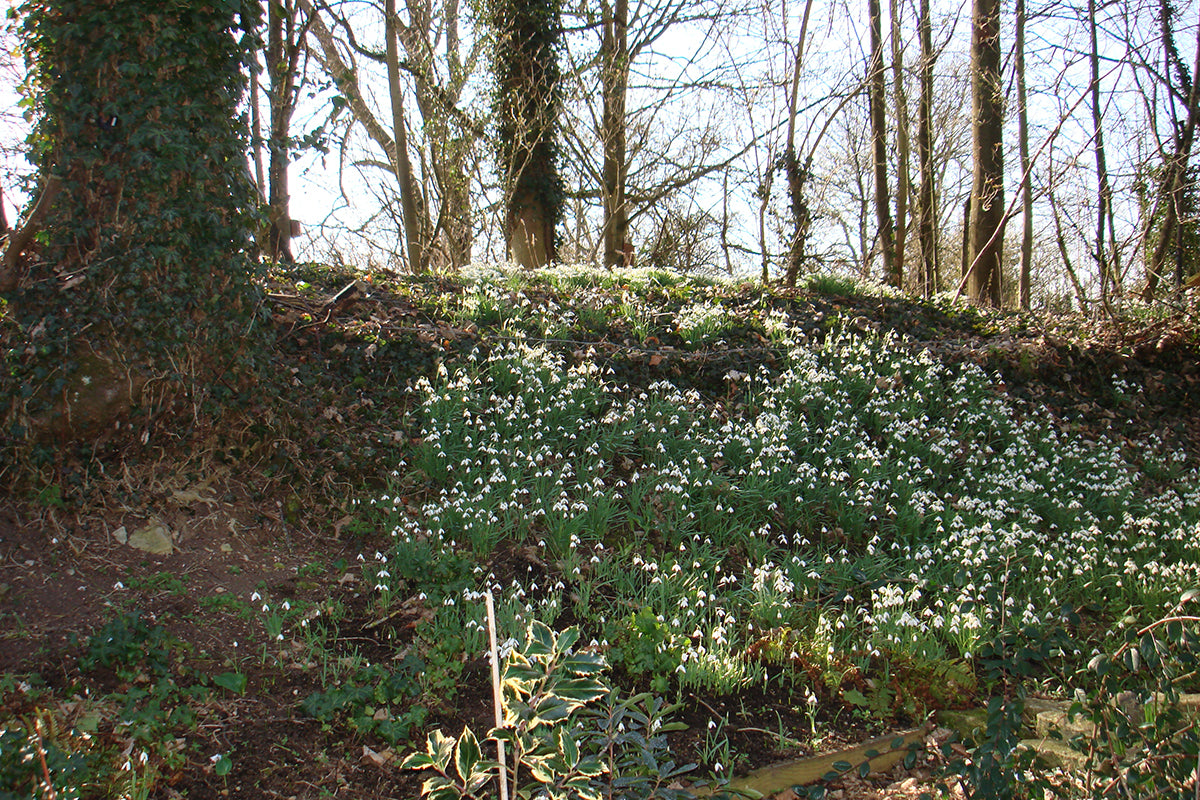Plant profile - snowdrops

Snowdrops, Galanthus nivalis (meaning ‘milk flower of the snow’), originated across Central and Southern Europe. Botanical historians believe the Romans may have introduced the plant. The first documented cultivation is in the writings of English herbalist John Gerard in 1597. Today, over 2,500 recognized cultivars demonstrate the genetic diversity and adaptability of this bulbous plant.
Taking a closer look, snowdrop flowers feature a unique structure with three outer tepals that curve outward, and three inner almost tubular tepals. The flower is held up on a stem that can range from just a few centimetres to over 30cm and underneath this is the small 10-15mm bulb.
In recent years climate change has started to alter the snowdrops' traditional flowering patterns. Where they once reliably emerged in late February, milder winters now trigger blooming as early as mid-January.
For such a diminutive flower they are particularly robust. They thrive in lightly shaded woodland environments, often clustering around historical human settlements and their ability to withstand sub-zero temperatures and intermittent snowfall demonstrates their remarkable adaptability.
Flowering in the depths of winter and with such detailed variation in the flowers, the passion for snowdrops has a strong horticultural following. Enter the world of galanthophiles - a passionate horticultural subculture where snowdrop enthusiasm reaches near-obsessive levels. Armed with dentists' mirrors, cameras, and knee pads, these horticultural detectives meticulously examine every minute detail of their prized snowdrops, from perianth markings to leaf form.
Their pursuit? Rare and extraordinary snowdrop varieties that can fetch astonishing prices. In early 2022, professional nursery owner Joe Sharman made headlines when a single bulb of Galanthus plicatus 'Golden Tears' sold for an eye-watering £1,850 on eBay. This wasn't his first record-breaking sale. In 2015, his 'Golden Fleece' variety sold for £1,390.
The collector's market for rare snowdrops has been nothing short of extraordinary. Previous record-breaking sales include 'Flocon de Neige' at £265 in 2011 and 'EA Bowles' at £357 in 2012. By 2019, a single 'Dryad Gold Ingot' was commanding £860. The term 'galanthophile' itself has a interesting history, reportedly coined by legendary horticulturist EA Bowles (1865-1954), who maintained an impressive snowdrop collection at his Essex home.
This passionate collecting can come with a dark side. Snowdrop theft has become a serious issue. Since 1997, collectors have reported numerous high-profile thefts, including a large clump of the rare yellow Galanthus elwesii 'Carolyn Elwes' from Colesbourne and a massive overnight theft of 13,000 bulbs from the Walsingham Estate in Norfolk.
Garden owners are fighting back with tactics that sound more like a spy movie than gardening. Steel cages pinning valuable bulbs underground, infrared security cameras, motion-detecting halogen lamps, and even private security personnel have become standard protection methods. Some collectors have taken to deliberately not labelling rare varieties, or planting them close to their homes for constant surveillance.
The snowdrop world is clearly not for the faint-hearted - it's a realm of passion, high stakes, and unexpected drama where a single bulb can be worth more than many people's monthly income.







